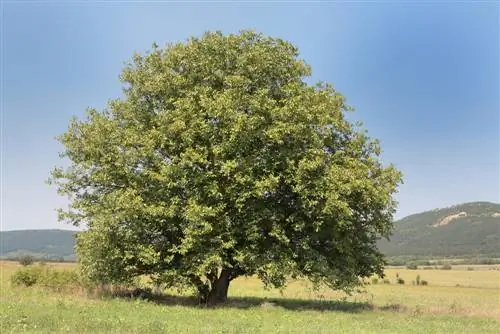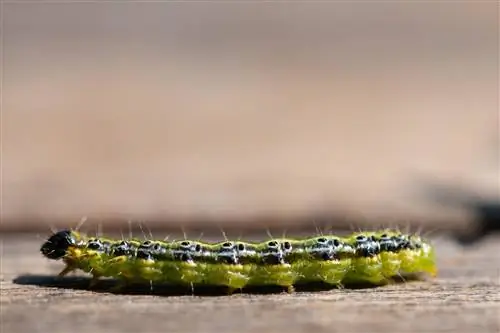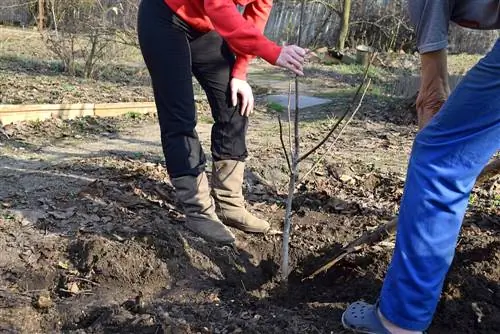- Author admin [email protected].
- Public 2023-12-16 16:46.
- Last modified 2025-01-23 11:21.
Underplanting a walnut tree is not an easy matter. In fact, the walnut does not get along well with other plants nearby. It is usually these other plants that suffer. In our guide we explain why the walnut tree does not tolerate foreign plants. We also have some tips for you on how you can still see beautiful plants thriving under the walnut tree.

Which plants get along with a walnut tree?
Underplanting under a walnut tree can be successful despite intolerance by choosing plants that tolerate tannins and inhibitors and prefer shady locations, e.g. wood anemones, bergenia, ferns, hostas and periwinkles. Regular removal of walnut leaves and adequate water supply are important.
Causes of incompatibility with other plants
The main problem is that the leaves of the walnut excrete juglone. This is a germ-inhibiting substance. This is washed out by the rain and ends up in the ground. There it behaves like a weed killer.
In addition, the roots of the walnut also secrete specific inhibitors. These slow down the growth of the plants under the walnut tree.
Apart from these fundamental causes, there are two potential obstacles:
- The roots of the walnut tree sometimes absorb all the water.
- The dense canopy of leaves provides a lot of shade - lack of light is counterproductive.
What else speaks against under-planting
Of course it's no fun to remove the falling autumn leaves of the walnut tree from a plantation every year.
And nobody wants to dig through other plants when harvesting the fruit either.
These two aspects clearly speak against attempting under-planting. But
How to successfully underplant walnuts
In practice, there are several cases in which other plants thrive quite well under a walnut tree - even if perhaps not quite optimally.
It is important to pay increased attention to underplanting. From the choice to the care of the plants, a lot of things have to be carefully planned and implemented sensibly.
Characteristics of suitable plants for the walnut
The underplanting of a walnut
- must cope with tanning agents and inhibitors,
- must not get too high and
- should love semi-shady to shady locations.
The following are therefore suitable:
- Wood anemones (bloom in spring before the walnut casts too much shade)
- Bergenie (very s alt tolerant)
- Ferns (preferably robust varieties such as worm fern or ostrich fern)
- Funkas (shade-loving, but be sure to plant in pots to keep inhibitors away)
- Evergreen (robust and ground-covering)
Important care measures
It is crucial to choose plants that do not get in the way of the walnut's characteristics (see examples above). You should also always remove falling leaves immediately so that the germ-inhibiting substances cannot spread. And: Make sure that the underplanting can always absorb enough water and nutrients.
Tip
An older walnut tree has a better chance that other plants will grow and thrive.






